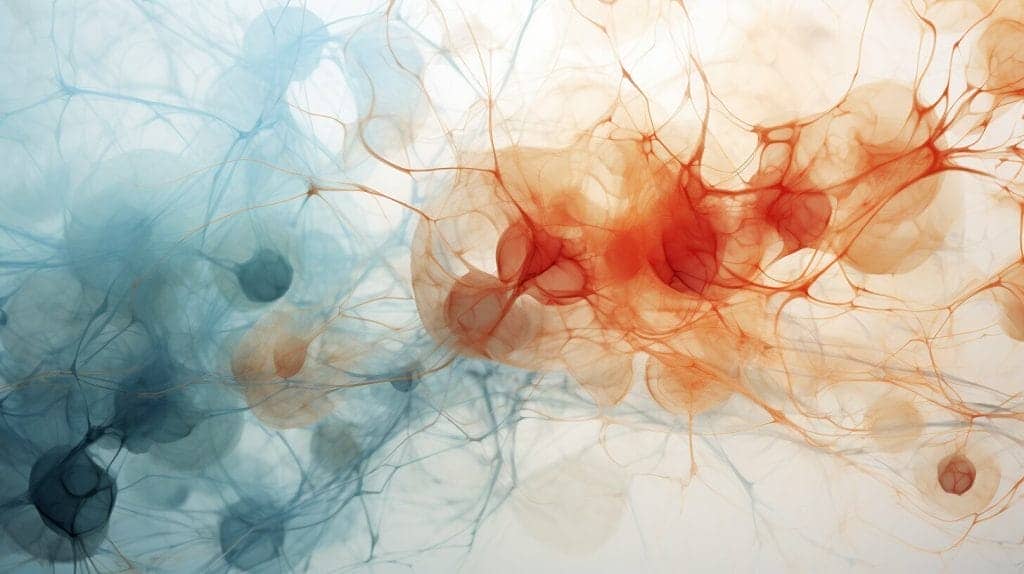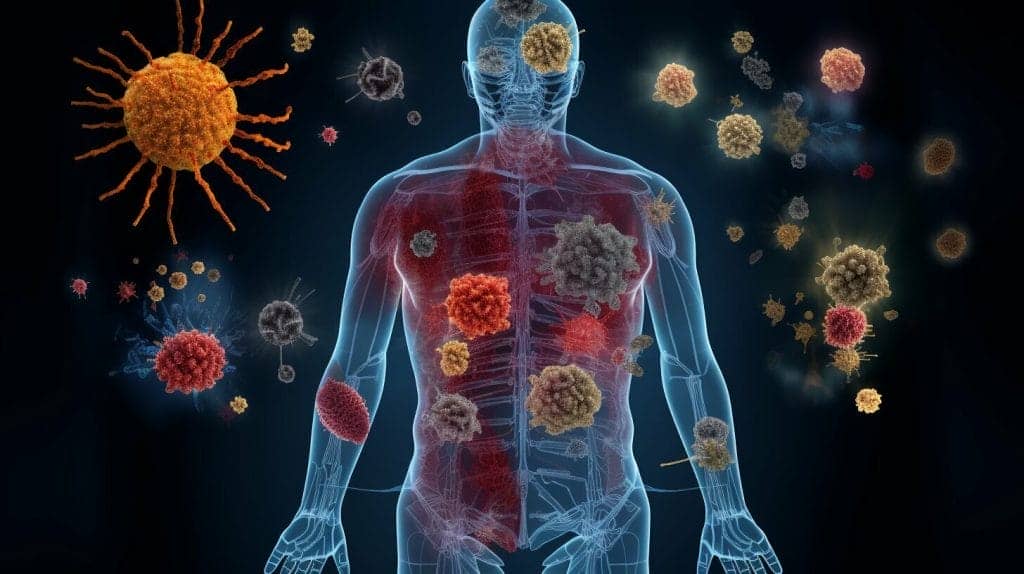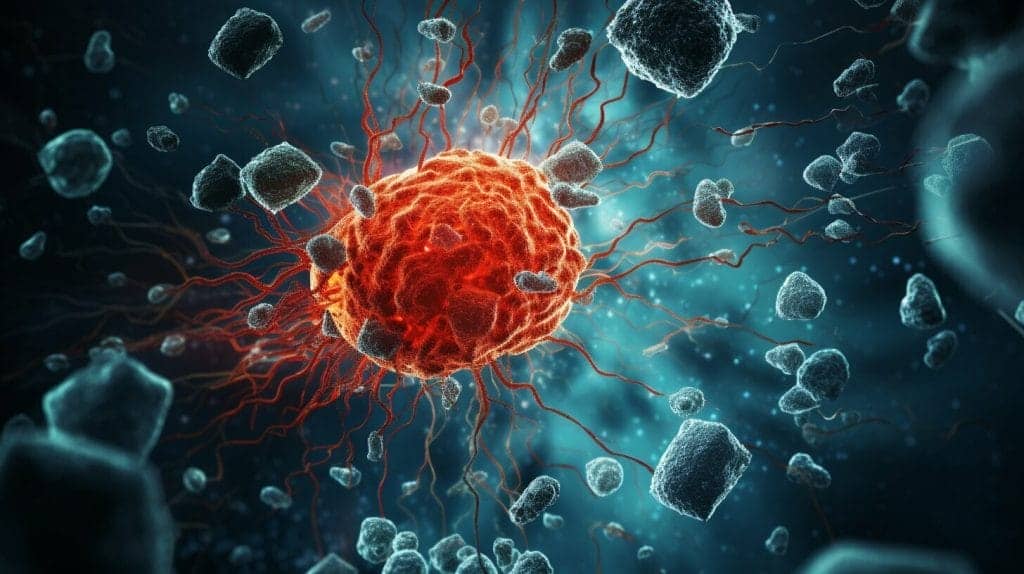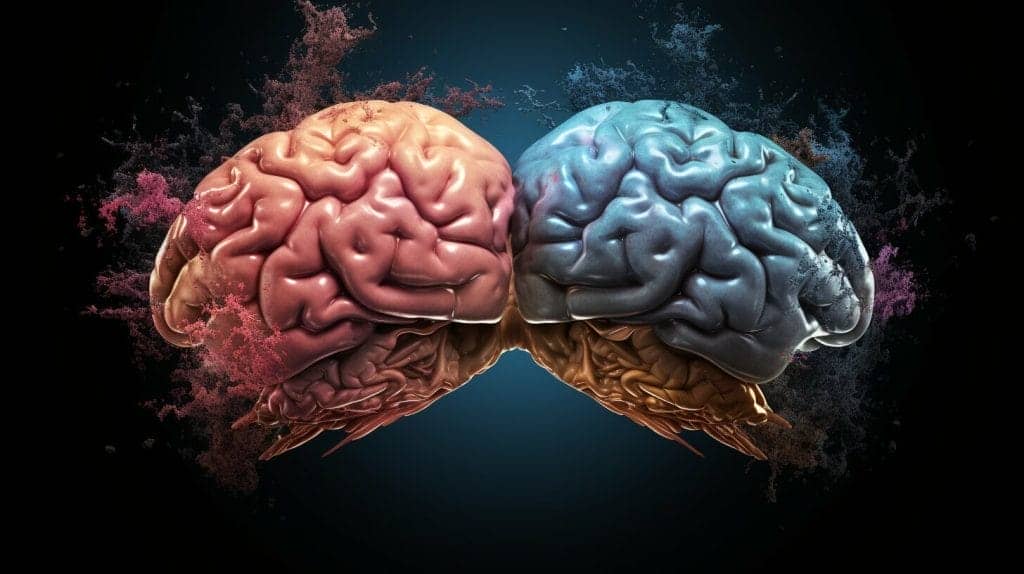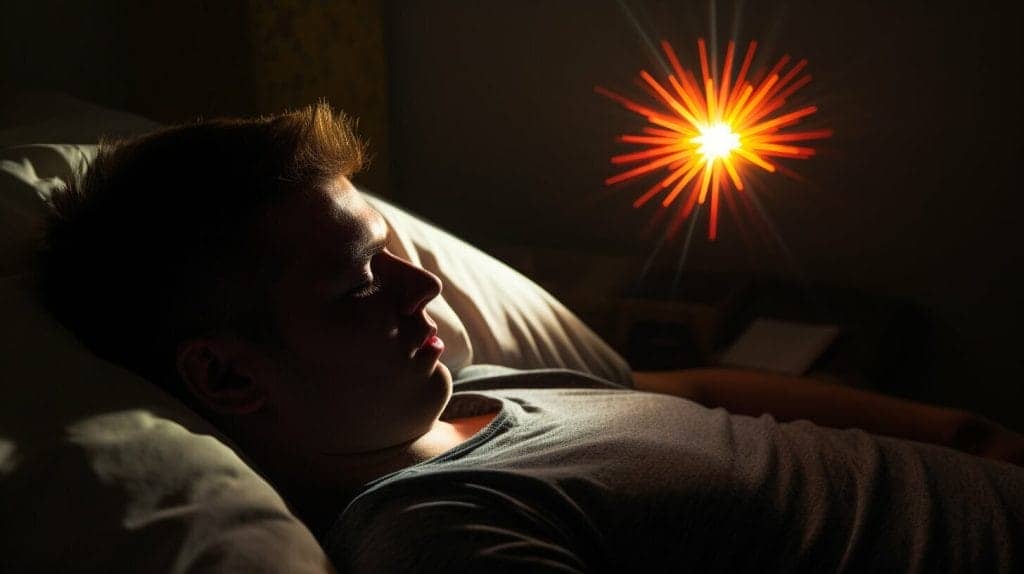With the ongoing COVID-19 pandemic, medical experts and researchers continue to discover new information about this infectious disease’s long-term effects. As more people recover from COVID-19, a growing number of individuals report experiencing long-lasting symptoms, known as Long COVID or post-acute sequelae of SARS-CoV-2 infection (PASC).
As medical professionals and researchers continue to study Long COVID, they have identified a range of symptoms, including fatigue, shortness of breath, brain fog, and more. One symptom that has recently garnered attention is sciatica, a condition commonly associated with lower back pain, which is caused by a pinched nerve in the lower spine.
This article aims to explore the potential connection between sciatica and Long COVID. It will discuss Long COVID and its associated symptoms, provide an overview of sciatica, examine the potential links between Long COVID and sciatica, and highlight treatment approaches for individuals experiencing both conditions.
Key Takeaways:
- Long COVID is a condition characterized by long-lasting symptoms that some individuals experience after contracting COVID-19
- Sciatica is a condition characterized by lower back pain caused by a pinched nerve in the lower spine
- There may be a potential connection between sciatica and Long COVID, and ongoing research is needed to fully understand this relationship
- Individuals experiencing Long COVID and sciatica symptoms should seek medical advice and explore different treatment options
Understanding Long COVID
Long COVID, also known as post-acute sequelae of SARS-CoV-2 infection (PASC), describes the persistence of symptoms beyond the acute phase of COVID-19 infection. While some individuals may recover within a few weeks, others may experience symptoms that last for months, significantly impacting their quality of life.
The symptoms of Long COVID vary widely and may affect multiple organ systems, including the respiratory, neurological, and cardiovascular systems. Common symptoms reported by individuals with Long COVID include fatigue, shortness of breath, chest pain, palpitations, joint pain, and difficulty concentrating.
While there is still much to learn about Long COVID, studies have suggested that it may be more likely to occur in individuals who experienced more severe acute COVID-19 infections, although it can occur in individuals with mild or asymptomatic cases as well.
The Association between Long COVID and Sciatica
Sciatica is a type of nerve pain that can be caused by compression or irritation of the sciatic nerve, which runs from the lower back down through the legs. While sciatica is commonly associated with back injuries or herniated discs, there is growing concern that it may also be a symptom of Long COVID.
Research on this potential association is limited, but some case reports and small studies have suggested that a subset of individuals with Long COVID may experience sciatica-like symptoms. It is important to note that not all individuals with Long COVID will experience sciatica and that multiple factors, including pre-existing conditions and comorbidities, may contribute to the development of this symptom.
As the understanding of Long COVID and its potential connections to sciatica continues to evolve, healthcare professionals must remain vigilant and investigate all potential symptoms to ensure accurate diagnosis and appropriate treatment.
What is Sciatica?
Sciatica is a common condition that affects the sciatic nerve, which is the largest nerve in the human body. The sciatic nerve runs from the lower back down through the hips, buttocks, and legs, providing sensation and motor control to the lower body.
Sciatica occurs when the sciatic nerve is compressed or irritated, leading to symptoms such as sharp pain, numbness, tingling, and weakness in the affected leg. The pain associated with sciatica can range from mild to severe and can be debilitating in some cases.
There are several factors that can cause sciatica, including herniated discs, spinal stenosis, degenerative disc disease, and spondylolisthesis. In some cases, sciatica can be the result of trauma, such as a fall or car accident.
The hallmark symptom of sciatica is pain that radiates from the lower back through the buttock and down the leg. Other common symptoms include tingling, burning, or numbness in the affected leg, and weakness in the leg or foot.
The severity and duration of sciatica symptoms can vary, depending on the underlying cause and the individual’s overall health. With proper diagnosis and treatment, most people with sciatica can achieve significant relief from their symptoms and return to their normal activities.
The Potential Link between Sciatica and Long COVID
As the number of Long COVID cases continues to rise, researchers are beginning to explore the potential links between this condition and other health issues. One such area of interest is the relationship between Long COVID and sciatica.
While the research is still in its early stages, there is evidence to suggest that sciatica may be a symptom of Long COVID in some individuals. The exact mechanism behind this connection is not yet fully understood, but several hypotheses have been proposed.
| Potential Causes of Sciatica in Long COVID Patients |
|---|
| Inflammation: Long COVID has been shown to cause inflammation throughout the body, which may lead to nerve irritation and subsequent sciatic pain. |
| Immune system dysfunction: It is possible that Long COVID may lead to immune system dysfunction, which could result in the development of sciatica. |
| Changes in physical activity: If Long COVID causes changes in physical activity levels, such as prolonged periods of bedrest or reduced mobility, it may lead to the development of sciatica. |
Despite the limited research on this topic, many individuals with Long COVID have reported experiencing sciatic pain. This pain may manifest as a shooting or burning sensation in the lower back, buttocks, or legs. Some individuals may also experience numbness or tingling in these areas.
It is important to note that not all individuals with Long COVID will experience sciatica, and not all cases of sciatica are a result of this condition. However, for those who do develop this symptom, seeking medical advice and exploring treatment options is crucial for managing pain and promoting overall well-being.
Current Studies and Research Efforts
As interest in the potential connection between sciatica and Long COVID grows, researchers are beginning to investigate this relationship more closely. Several studies are currently underway, aiming to identify the prevalence of sciatica in Long COVID patients and explore the mechanisms behind this association.
Additionally, researchers are exploring different treatment approaches for sciatica in Long COVID patients, including traditional pain management techniques and alternative therapies such as acupuncture and chiropractic care.
While the research is still in its early stages, these efforts hold promise for improving our understanding of the connections between Long COVID and sciatica and developing more effective treatment strategies.
Personal Experiences and Testimonials
Individuals who have experienced Long COVID may develop symptoms of sciatica, which can significantly impact their quality of life. These personal experiences and testimonials provide a glimpse into the challenges faced by those who are dealing with Long COVID and sciatica.
“The pain was unbearable. It felt like an electric shock running down my leg every time I moved. I didn’t know what was happening to me until I spoke to my doctor and learned about Long COVID. It’s been a long road, but with the right treatment, the pain has become manageable.”
– Sarah, Long COVID and sciatica patient
Many Long COVID patients describe experiencing sciatica symptoms, which can include pain, tingling, or numbness in the lower extremities. As Sarah explains, the pain can be severe and affect their ability to perform daily activities.
“I thought I was done with COVID after I recovered from the initial illness, but then the sciatica started. It’s been months, and the pain hasn’t gone away. It’s frustrating because there’s not much that seems to help. I wish more research was being done on Long COVID and its potential long-term effects.”
– Mike, Long COVID and sciatica patient
The long-term effects of Long COVID are still not fully understood, and many patients like Mike remain frustrated with the ongoing symptoms and lack of effective treatment options. More research is needed to understand the connection between sciatica and Long COVID and develop targeted treatment strategies.
Treatment Approaches for Sciatica in Long COVID Patients
As the relationship between Long COVID and sciatica becomes more apparent, it is crucial to explore effective treatment options that can alleviate symptoms and improve overall quality of life. Treatment approaches for sciatica in Long COVID patients may include conventional medical treatments, alternative therapies, and self-care practices.
Conventional Medical Treatments
Conventional medical treatments for sciatica may include pain management techniques, such as over-the-counter or prescription medications, physical therapy, and corticosteroid injections. In severe cases, surgery may be recommended to alleviate pressure on the sciatic nerve.
It is important to consult with a healthcare professional to determine the best course of treatment and to ensure that any medications or procedures are safe and appropriate for the individual’s overall health and medical history.
Alternative Therapies
Alternative therapies, such as chiropractic care, acupuncture, and massage therapy, may also be beneficial for managing sciatica in Long COVID patients. These therapies focus on addressing the underlying cause of sciatic pain, such as inflammation or muscle tension, rather than simply masking symptoms with medication.
Always consult with a healthcare professional before trying any alternative therapy, and ensure that the practitioner is licensed and experienced in treating sciatica in the context of Long COVID.
At Oasis Medical Institute in Tijuana, MX, a holistic treatment approach is utilized for Long COVID patients experiencing symptoms of sciatica. This approach integrates conventional medical treatments with alternative therapies to provide comprehensive and tailored care for each individual.
Self-Care Practices
In addition to medical treatments, self-care practices can also play a vital role in managing sciatic pain in Long COVID patients. Simple lifestyle modifications, such as maintaining proper posture, engaging in regular exercise, and stretching regularly, can help alleviate pressure on the sciatic nerve and reduce inflammation.
It is important to consult with a healthcare professional before embarking on any new exercise regimen or stretching routine to ensure that it is safe and appropriate for the individual’s overall health and medical history.
Overall, a comprehensive and personalized approach to treatment is essential for managing sciatica in individuals with Long COVID. By working closely with a healthcare team and exploring various treatment options, individuals with sciatic symptoms can find relief and improve their overall quality of life.
Oasis Medical Institute: A Holistic Approach
At Oasis Medical Institute in Tijuana, MX, individuals dealing with Long COVID and sciatica symptoms can benefit from a comprehensive and holistic approach to treatment. The institute emphasizes collaboration between conventional medicine and alternative therapies, recognizing that a multidisciplinary approach is often necessary to address the complexities of Long COVID and sciatica.
Medical director Dr. Francisco Contreras MD leads the team at Oasis Medical Institute, offering his expertise in integrative medicine to provide tailored treatment programs for Long COVID patients with sciatica symptoms. Dr. Contreras acknowledges the significant impact that Long COVID can have on individuals’ physical and emotional well-being, and his treatment philosophy prioritizes the healing of the whole person, not just the physical symptoms.
At Oasis Medical Institute, the team employs a range of modalities, including nutrition, exercise, detoxification, and psychological support, to address the underlying causes of Long COVID and sciatica. With a focus on patient-centered care, the team at Oasis Medical Institute works closely with each individual to understand their unique needs and develop a personalized treatment plan that optimizes their chances of recovery.
Available Treatment Options
Managing sciatica in Long COVID patients requires a comprehensive treatment plan that considers both conventional and alternative therapies. Here are some of the treatment options available:
| Conventional Medical Treatments | Alternative Treatments |
|---|---|
| Pain Management Techniques: Pain relievers, muscle relaxants, anti-inflammatory drugs, and steroid injections can help alleviate sciatic pain. | Acupuncture: Fine needles are inserted into specific points on the body to relieve pain and promote healing. |
| Physical Therapy: Targeted exercises and stretches can strengthen the back muscles, improve mobility, and reduce pain. | Chiropractic Care: Spinal manipulation and adjustments can help realign the spine and reduce pressure on the sciatic nerve. |
| Surgery: In some cases, surgery may be necessary to alleviate pressure on the sciatic nerve. | Herbal Remedies: Certain herbs, such as turmeric and ginger, have anti-inflammatory properties and can help reduce sciatic pain. |
It is important to note that the effectiveness of treatment options can vary depending on the individual and the severity of the sciatic symptoms. Therefore, a personalized approach to treatment is recommended.
Section 9: Lifestyle Modifications and Self-Care Practices
For individuals dealing with Long COVID and sciatica symptoms, making lifestyle modifications and practicing self-care techniques can help alleviate pain and promote overall well-being. Here are some suggestions:
- Exercise: Engage in low-impact exercises that strengthen your core and lower body muscles, such as walking, swimming, or yoga. Consult with a healthcare provider before starting any exercise program.
- Proper Posture: Maintaining good posture while sitting and standing can help alleviate pressure on the sciatic nerve. Use a lumbar support cushion while sitting and ensure the hips are aligned with the ears while standing.
- Stretching: Incorporate regular stretching into your daily routine to help loosen tight muscles and relieve pressure on the sciatic nerve. Consult with a physical therapist or healthcare provider for guidance on safe stretching techniques.
- Hot and Cold Therapy: Applying ice packs or heat pads to the affected area can help alleviate pain and promote healing. Use caution when applying heat to avoid burns and limit application to 20-minute intervals.
- Massage and Acupuncture: Massage therapy and acupuncture can help alleviate sciatic pain and promote relaxation. Consult with a licensed therapist or healthcare provider for guidance on safe and effective techniques.
By incorporating these lifestyle modifications and self-care practices into your daily routine, you can manage sciatic pain and promote overall well-being in the context of Long COVID.
Seeking Medical Advice and Support
Individuals experiencing sciatica symptoms in the context of Long COVID should seek medical advice and support. It is crucial to consult a healthcare professional when experiencing any symptoms to ensure appropriate diagnosis, treatment, and management of the condition.
Patients should be prepared to provide a detailed medical history, including any pre-existing conditions or underlying health issues that may contribute to sciatic symptoms. They should also keep track of the severity and frequency of their symptoms and any factors that may trigger or exacerbate them, such as certain activities or postures.
When consulting a healthcare professional, patients should ask questions and advocate for their own care and treatment. They should inquire about the potential link between sciatica and Long COVID and discuss any concerns about their overall health and well-being.
It is important for patients to find a healthcare team that understands the potential connections between Long COVID and sciatica. This may involve seeking out specialists in relevant fields, such as neurology, rheumatology, or physical therapy. One should feel free to ask for recommendations from healthcare professionals, family, or friends.
Research and Future Directions
The potential association between sciatica and Long COVID is still not well understood, and further research is needed to determine the mechanisms underlying this connection. Currently, there is limited research exploring this topic, with only a few case reports and studies investigating the relationship between sciatica and Long COVID.
One study found that 22% of individuals diagnosed with COVID-19 experienced neurological symptoms, including sciatica. However, the sample size of this study was small, and further investigation is necessary to confirm these findings.
Another study suggested that the development of sciatica in Long COVID patients may be related to the virus’s potential impact on the nervous system. Researchers noted that the virus’s impact on the nervous system could lead to inflammation and damage, potentially leading to sciatic symptoms.
Despite the limited research on this topic, it is crucial to continue investigating the potential connection between sciatica and Long COVID. With the number of Long COVID cases increasing worldwide, understanding the potential neurological symptoms of this condition is crucial in managing and treating affected individuals.
Raising Awareness and Education
As medical professionals continue to investigate the potential link between Long COVID and sciatica, it is crucial to raise awareness and educate both healthcare professionals and the general public about these conditions.
“It is important for healthcare providers to recognize the potential connection between Long COVID and sciatica, in order to accurately diagnose and treat patients,” says Dr. Francisco Contreras MD, Medical Director at Oasis Medical Institute. “By raising awareness and educating individuals, we can help ensure those experiencing symptoms receive appropriate care and support.”
As part of this effort, Oasis Medical Institute is committed to sharing information and resources with patients and the broader community. By promoting education and awareness, we aim to increase understanding about the potential connections between sciatica and Long COVID, and to ultimately improve patient outcomes.
Book Consultation at Oasis Medical Institute
If you or someone you know is experiencing symptoms of Long COVID and sciatica, it is essential to seek medical advice and explore various treatment options. Oasis Medical Institute in Tijuana, MX, offers a comprehensive treatment approach that integrates conventional medicine with alternative therapies, under the guidance of medical director Dr. Francisco Contreras MD.
To book a consultation and learn more about the COVID-19 treatment program at Oasis Medical Institute, call 866-868-1992. The institute’s team of experienced healthcare professionals can guide you through the process of personalized care and support you in managing the symptoms of Long COVID and sciatica.
Call to Action
If you or a loved one is experiencing symptoms of Long COVID, including sciatica, we encourage you to take action and seek comprehensive care at Oasis Medical Institute in Tijuana, MX. Our team of experts, led by medical director Dr. Francisco Contreras MD, offers a holistic treatment approach that integrates conventional and alternative therapies to address the long-term effects of COVID-19.
To book a consultation and learn more about our COVID-19 treatment program, please call us at 866-868-1992 or visit our website.
Conclusion
In conclusion, the potential connection between sciatica and Long COVID is an area of ongoing research and investigation. While there is still much to be learned about this association, there is evidence suggesting that individuals with Long COVID may experience sciatic symptoms. The importance of seeking medical advice and exploring different treatment options cannot be overstated. It’s also crucial to raise awareness and educate both healthcare professionals and the general public about these conditions to ensure accurate diagnosis, appropriate treatment, and improved support for individuals experiencing sciatic symptoms in the context of Long COVID. Further research is needed to fully understand the relationship between sciatica and Long COVID. However, individuals experiencing these symptoms can find comprehensive care at Oasis Medical Institute in Tijuana, MX, where medical director Dr. Francisco Contreras MD leads an integrative treatment approach for COVID-19 patients. Take action and book a consultation to receive the support and care needed for Long COVID and sciatica symptoms.
FAQ
Q: Is Sciatica a Symptom of Long COVID?
A: In this section, we will explore the potential connection between sciatica and Long COVID. We will examine whether sciatica can be considered a symptom of Long COVID and discuss any existing research or studies on this topic.
Q: Understanding Long COVID
A: Before delving into the connection between sciatica and Long COVID, it is crucial to understand what Long COVID is and its symptoms. In this section, we will provide an overview of Long COVID, its symptoms, and its potential long-term effects on the body. We will also specifically address if sciatica is among the symptoms commonly associated with Long COVID.
Q: What is Sciatica?
A: To comprehend the relationship between sciatica and Long COVID, it is essential to have a clear understanding of sciatica itself. In this section, we will define sciatica, explain its causes and symptoms, and explore its usual presentation in individuals. We will also discuss how sciatica typically manifests and whether it could potentially be linked to Long COVID.
Q: The Potential Link between Sciatica and Long COVID
A: Here, we will delve deeper into the possible connection between sciatica and Long COVID. We will examine any existing studies, research, or case reports that have explored the relationship between the two conditions. We will also discuss the theories or mechanisms proposed to explain this potential association.
Q: Personal Experiences and Testimonials
A: In this section, we will share personal experiences and testimonials from individuals who have been diagnosed with Long COVID and developed symptoms of sciatica. By highlighting these real-life accounts, we aim to provide a better understanding of the potential link between the two conditions and the impact it may have on individuals’ lives.
Q: Treatment Approaches for Sciatica in Long COVID Patients
A: As the connection between sciatica and Long COVID becomes clearer, it is crucial to explore effective treatment approaches that can alleviate sciatic symptoms in Long COVID patients. In this section, we will discuss various treatment options available, including both conventional and alternative methods. We will also highlight the holistic treatment approach at Oasis Medical Institute in Tijuana, MX, which integrates medicine for COVID-19 with the expertise of medical director Dr. Francisco Contreras MD.
Q: Oasis Medical Institute: A Holistic Approach
A: This section will focus on the holistic approach to treating Long COVID and sciatica at Oasis Medical Institute in Tijuana, MX. We will provide an overview of the institute’s integrative treatment approach, emphasizing the collaboration between conventional medicine and alternative therapies. We will discuss the role of medical director Dr. Francisco Contreras MD in providing comprehensive care for Long COVID patients experiencing sciatica symptoms.
Q: Available Treatment Options
A: Here, we will explore the various treatment options available for individuals experiencing both Long COVID and sciatica symptoms. We will discuss conventional medical treatments, such as pain management techniques and physical therapy. Additionally, we will highlight alternative treatments, including acupuncture, chiropractic care, and other holistic approaches that may be beneficial for managing sciatica in Long COVID patients.
Q: Lifestyle Modifications and Self-Care Practices
A: In this section, we will emphasize the importance of lifestyle modifications and self-care practices for individuals dealing with Long COVID and sciatica. We will discuss the role of exercise, proper posture, stretching, and other self-care techniques that can help manage sciatic pain and promote overall well-being in Long COVID patients.
Q: Seeking Medical Advice and Support
A: It is crucial for individuals experiencing sciatica symptoms in the context of Long COVID to seek medical advice and support. In this section, we will provide guidance on when to consult a healthcare professional, what questions to ask, and how to advocate for appropriate care. We will also highlight the importance of finding a healthcare team that understands the potential connections between Long COVID and sciatica.
Q: Research and Future Directions
A: As the understanding of Long COVID and its potential links to sciatica continues to evolve, ongoing research is essential. In this section, we will discuss current research efforts investigating the connection between Long COVID and sciatica. We will also highlight the need for further studies to explore the mechanisms behind this association and to develop more effective treatment strategies.
Q: Raising Awareness and Education
A: It is important to raise awareness and educate both healthcare professionals and the general public about the potential connection between sciatica and Long COVID. In this section, we will discuss the significance of spreading knowledge and understanding about these conditions to ensure accurate diagnosis, appropriate treatment, and improved support for individuals experiencing sciatic symptoms in the context of Long COVID.
Q: Book Consultation at Oasis Medical Institute
A: For individuals seeking comprehensive care for Long COVID and sciatica, Oasis Medical Institute in Tijuana, MX, offers a holistic treatment approach. In this section, we will provide information on how to book a consultation at the institute and emphasize the expertise of medical director Dr. Francisco Contreras MD in guiding individuals through a tailored COVID-19 treatment program.
Q: Call to Action
A: To receive personalized care for Long COVID and sciatica symptoms, we encourage individuals to take action and book a consultation at Oasis Medical Institute. In this section, we will provide a clear call to action, including the contact information (phone number and/or website) to reach out and initiate the process of seeking comprehensive treatment.
Q: Conclusion
A: In this section, we will summarize the key points discussed throughout the article, including the potential connection between sciatica and Long COVID. We will emphasize the importance of seeking medical advice, exploring different treatment options, and raising awareness about these conditions. We will conclude by acknowledging that further research is needed to fully understand the relationship between sciatica and Long COVID.
Dr. Francisco Contreras, MD is a renowned integrative medical physician with over 20 years of dedicated experience in the field of integrative medicine. As the Medical Director of the Oasis of Hope Hospital in Tijuana, Mexico, he has pioneered innovative treatments and integrative approaches that have been recognized globally for the treatment of cancer, Lyme Disease, Mold Toxicity, and chronic disease using alternative treatment modalities. Dr. Contreras holds a medical degree from the Autonomous University of Mexico in Toluca, and speciality in surgical oncology from the University of Vienna in Austria.
Under his visionary leadership, the Oasis of Hope Hospital has emerged as a leading institution, renowned for its innovative treatments and patient-centric approach for treating cancer, Lyme Disease, Mold Toxicity, Long-Haul COVID, and chronic disease. The hospital, under Dr. Contreras's guidance, has successfully treated thousands of patients, many of whom traveled from different parts of the world, seeking the unique and compassionate care the institution offers.
Dr. Contreras has contributed to numerous research papers, articles, and medical journals, solidifying his expertise in the realm of integrative medicine. His commitment to patient care and evidence-based treatments has earned him a reputation for trustworthiness and excellence. Dr. Contreras is frequently invited to speak at international conferences and has been featured on CNN, WMAR2 News, KGUN9 News, Tyent USA, and various others for his groundbreaking work. His dedication to the medical community and his patients is unwavering, making him a leading authority in the field.
Contreras has authored and co-authored several books concerning integrative therapy, cancer, Lyme Disease and heart disease prevention and chronic illness, including "The Art Science of Undermining Cancer", "The Art & Science of Undermining Cancer: Strategies to Slow, Control, Reverse", "Look Younger, Live Longer: 10 Steps to Reverse Aging and Live a Vibrant Life", "The Coming Cancer Cure Your Guide to effective alternative, conventional and integrative therapies", "Hope Medicine & Healing", "Health in the 21st Century: Will Doctors Survive?", "Healthy Heart: An alternative guide to a healthy heart", “The Hope of Living Cancer Free”, “Hope Of Living Long And Well: 10 Steps to look younger, feel better, live longer” “Fighting Cancer 20 Different Ways”, "50 Critical Cancer Answers: Your Personal Battle Plan for Beating Cancer", "To Beat . . . Or Not to Beat?", and “Dismantling Cancer.”





